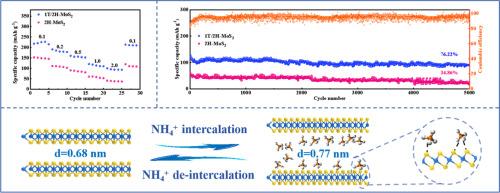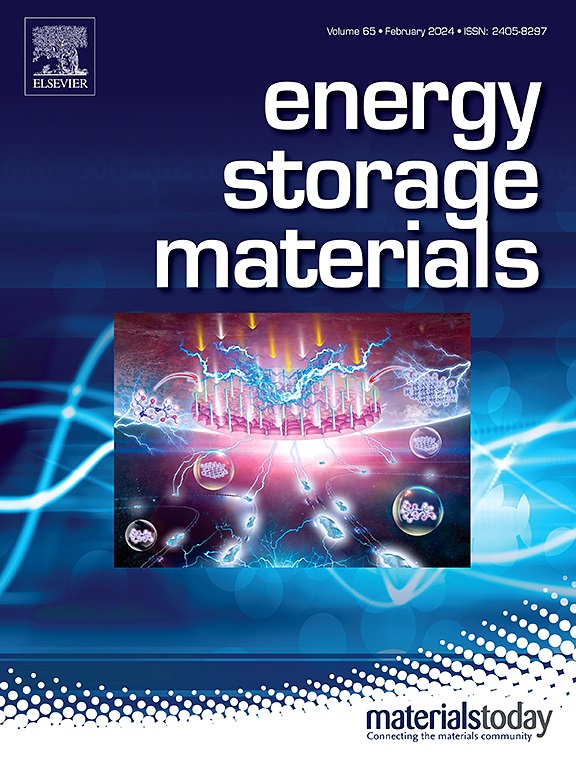Phase engineering enables ultrahigh-capacity 1T/2H-MoS2 for advanced ammonium-ion storage
IF 18.9
1区 材料科学
Q1 CHEMISTRY, PHYSICAL
引用次数: 0
Abstract
The aqueous ammonium ion batteries (AIBs) have recently drawn increasing concern due to their many advantages. However, the low capacity, poor rate performance and unstable structure of anode materials largely affect the overall performance of AIBs, thereby impeding their further development. Herein, inspired by DFT calculations, the MoS2 nanoflowers with 1T/2H hybrid crystal phase are designed by phase engineering strategy, and utilized as anode materials for aqueous AIBs for the first time. DFT calculations and experiments reveal that 1T/2H-MoS2 possesses an enlarged interlayer spacing, better electronic conductivity, and smaller diffusion energy barrier than 2H-MoS2 after the introduction of 1T phase, thus achieving an ultrahigh specific capacity (225.7 mAh g−1 at 0.1 A g−1) and splendid rate capability (100.0 mAh g−1 at 2.0 A g−1), which surpass the most metal-based anode materials in aqueous AIBs. Additionally, systematical ex-situ characterizations are utilized to illustrate the energy storage mechanism of NH4+ insertion/extraction in 1T/2H-MoS2 accompanied by H-bond formation/breaking and reversible transition of 1T/2H. This research not only offers a good strategy for designing and developing high-performance AIBs anode materials, but also provides valuable theoretical guidance for future exploration of their energy storage mechanism.


求助全文
约1分钟内获得全文
求助全文
来源期刊

Energy Storage Materials
Materials Science-General Materials Science
CiteScore
33.00
自引率
5.90%
发文量
652
审稿时长
27 days
期刊介绍:
Energy Storage Materials is a global interdisciplinary journal dedicated to sharing scientific and technological advancements in materials and devices for advanced energy storage and related energy conversion, such as in metal-O2 batteries. The journal features comprehensive research articles, including full papers and short communications, as well as authoritative feature articles and reviews by leading experts in the field.
Energy Storage Materials covers a wide range of topics, including the synthesis, fabrication, structure, properties, performance, and technological applications of energy storage materials. Additionally, the journal explores strategies, policies, and developments in the field of energy storage materials and devices for sustainable energy.
Published papers are selected based on their scientific and technological significance, their ability to provide valuable new knowledge, and their relevance to the international research community.
 求助内容:
求助内容: 应助结果提醒方式:
应助结果提醒方式:


